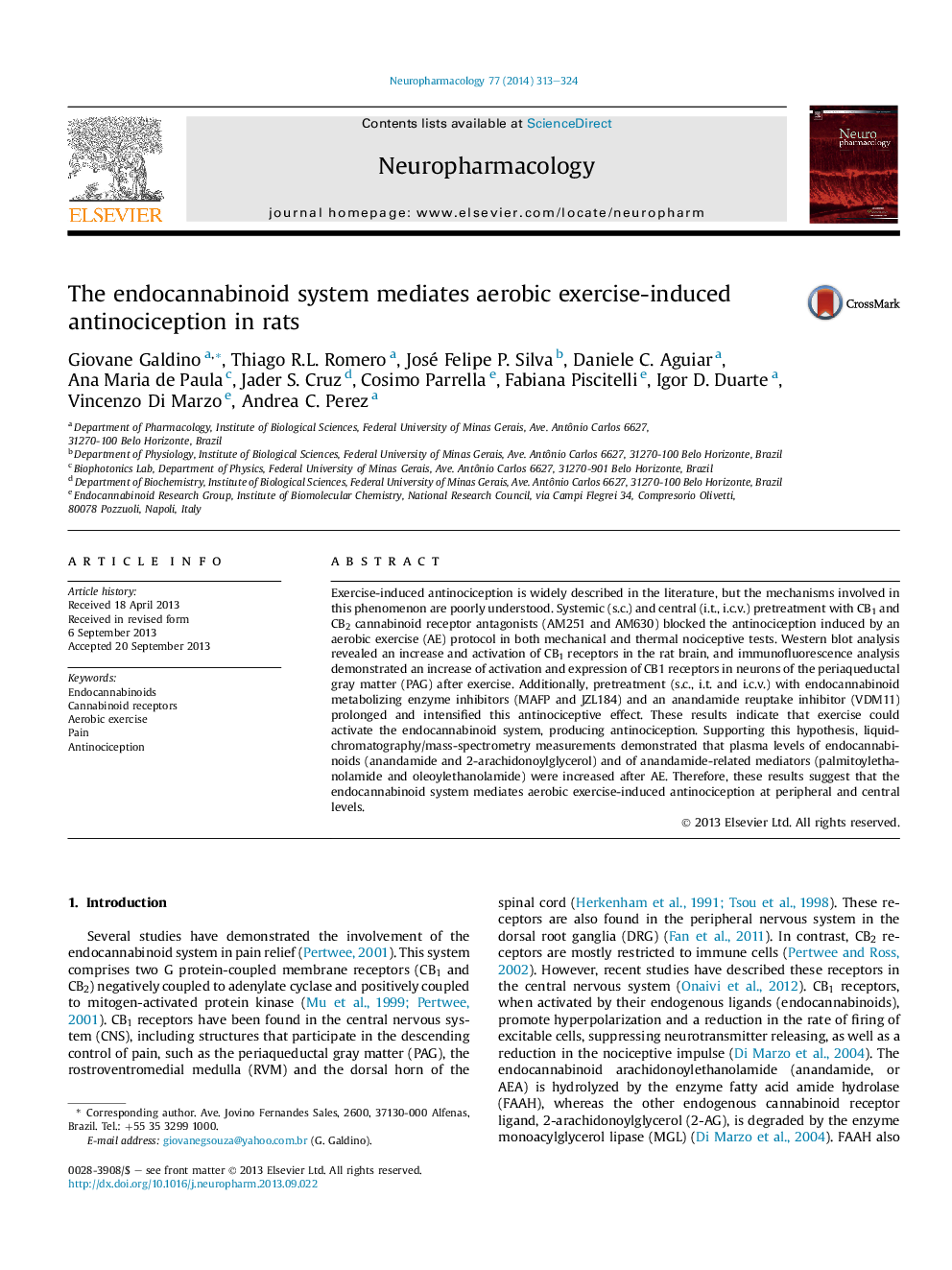| Article ID | Journal | Published Year | Pages | File Type |
|---|---|---|---|---|
| 5814883 | Neuropharmacology | 2014 | 12 Pages |
Abstract
Exercise-induced antinociception is widely described in the literature, but the mechanisms involved in this phenomenon are poorly understood. Systemic (s.c.) and central (i.t., i.c.v.) pretreatment with CB1 and CB2 cannabinoid receptor antagonists (AM251 and AM630) blocked the antinociception induced by an aerobic exercise (AE) protocol in both mechanical and thermal nociceptive tests. Western blot analysis revealed an increase and activation of CB1 receptors in the rat brain, and immunofluorescence analysis demonstrated an increase of activation and expression of CB1 receptors in neurons of the periaqueductal gray matter (PAG) after exercise. Additionally, pretreatment (s.c., i.t. and i.c.v.) with endocannabinoid metabolizing enzyme inhibitors (MAFP and JZL184) and an anandamide reuptake inhibitor (VDM11) prolonged and intensified this antinociceptive effect. These results indicate that exercise could activate the endocannabinoid system, producing antinociception. Supporting this hypothesis, liquid-chromatography/mass-spectrometry measurements demonstrated that plasma levels of endocannabinoids (anandamide and 2-arachidonoylglycerol) and of anandamide-related mediators (palmitoylethanolamide and oleoylethanolamide) were increased after AE. Therefore, these results suggest that the endocannabinoid system mediates aerobic exercise-induced antinociception at peripheral and central levels.
Related Topics
Life Sciences
Neuroscience
Behavioral Neuroscience
Authors
Giovane Galdino, Thiago R.L. Romero, José Felipe P. Silva, Daniele C. Aguiar, Ana Maria de Paula, Jader S. Cruz, Cosimo Parrella, Fabiana Piscitelli, Igor D. Duarte, Vincenzo Di Marzo, Andrea C. Perez,
